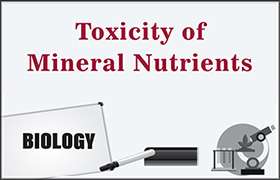CBSE Class 11-science Answered
Explain symbiotic biological nitrogen fixation . Mention the two biochemical component with their role in biological nitrogen fixation?
Asked by anishakumari9454 | 28 Jan, 2019, 08:32: PM
Symbiotic biological nitrogen fixation:
- The process of conversion of free nitrogen from the atmosphere into soluble nitrates by microorganisms is known as biological nitrogen fixation.
- The microbes which carry out biological nitrogen fixation are commonly called biological nitrogen fixers. E.g. Rhizobium and Azotobacter.
- Some bacteria such as Rhizobium leguminosarum live in symbiotic association with the root nodules of leguminous plants like beans, fenugreek, groundnut, pea, gram etc. and are able to convert free nitrogen from the atmosphere into soluble nitrates.
- The bacteria not only obtain food, but also protection from the root nodules. In return, they enrich the soil with nitrogen and increase its fertility. The host plant and also the other plants sown later in the same soil use the nitrates produced by the bacteria.
Role of biochemical components in biological nitrogen fixation:
- Some free-living bacteria like Azotobacter convert inorganic molecular nitrogen into organic compounds such as amino acids and proteins.
- Some bacteria recycle the nitrates back to the soil through the process of nitrification. During nitrification, the nitrogenous wastes from dead plants and animals are converted into ammonia by the action of bacteria such as Bacillus ramosus, Clostridium spp., etc.
- Ammonium compounds are formed from ammonia in the subsequent reaction. Finally, these ammonium compounds get converted first into nitrites by Nitrosomonas bacteria, and then into nitrates by Nitrobacter.
- Nitrification is followed by denitrification, wherein nitrates are converted into nitrogen gas (N2) by the action of denitrifying bacteria such as species of Nitrosomonas, Pseudomonas Alkaligene and Bacillus. The nitrogen gas is then released into the atmosphere.
Answered by Sheetal Kolte | 29 Jan, 2019, 11:14: AM
Concept Videos
CBSE 11-science - Biology
Asked by 1111sanketmondhe | 07 Mar, 2019, 03:04: PM
CBSE 11-science - Biology
Asked by anishakumari9454 | 28 Jan, 2019, 08:32: PM
CBSE 11-science - Biology
Asked by Topperlearning User | 14 Jun, 2016, 05:34: PM
CBSE 11-science - Biology
Asked by Topperlearning User | 14 Jun, 2016, 05:32: PM
CBSE 11-science - Biology
Asked by Topperlearning User | 14 Jul, 2014, 11:03: AM
CBSE 11-science - Biology
Asked by Topperlearning User | 14 Jul, 2014, 11:03: AM
CBSE 11-science - Biology
Asked by Topperlearning User | 14 Jun, 2016, 05:34: PM
CBSE 11-science - Biology
Asked by Topperlearning User | 14 Jun, 2016, 05:32: PM
CBSE 11-science - Biology
Asked by Topperlearning User | 14 Jun, 2016, 05:34: PM
CBSE 11-science - Biology
Asked by Topperlearning User | 14 Jun, 2016, 05:32: PM




